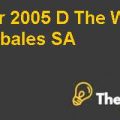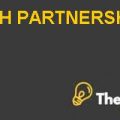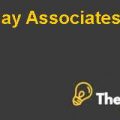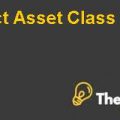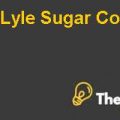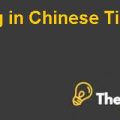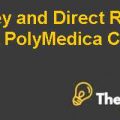
CALAVERAS VINEYARDS
- 1. Problem Statement
The management was concerned about the potential proposal for Calaveras Vineyards and is considering deciding whether the proposed terms are attractive. Further, the management is also concerned about the valuation and its ability to serve the proposed debt.
- 2. Overview of the company
The report presents a case about Calaveras Vineyards, which is a well-known producer of wine and spirit brands. In March 1994, Golden gate Capital that is a West Coast financial institution with main operations in commercial lending and financing received a loan proposal from NationsBank’s investment banking group, which states that the prospective acquisition of Calaveras Vineyards and solicited Goldengate’s participation in $4.5 million senior financing facility.
Beta
Beta has been calculated to determine the volatility of stock in the market. The beta of the market is considered as 1.0 and the risk of the individual stock is measured by analyzing its deviation from the market beta. If a beta is higher than 1 then it refers high risk with relatively high returns but on the other hand, if a company has a beta less than 1, then it indicates that the stock has low risk with low returns.
The case study does not give data of the beta related to Calaveras Vineyards, so in order to obtain the beta related to the company, the unlevered beta of its comparable firms can be used in order to determine the beta of Calaveras Vineyards. Unlevered beta is a beta without debt, which indicates that it eliminates the financial effect of leverage.
It is little bit difficult to derive the beta for Calaveras Vineyards because the company is continuously susceptible to market risk and due to the volatility of the industry as well. Canandaiua is a key player and charge low price in the capital market whereas Frogg’s Jump is a small player but has expertise in private label vines. Further, Finn & Sawyer can be used as a comparable firm because the company is small as compared to other players in the market and have the expertise in producing ultra-premium and super-premium, so it may result as alike in comparison.
In order to better facilitate the results, beta of the three pioneers are calculated but the beta related to Frogg’s Jump will be considered as our benchmark because Froggs’s Jump is a small company and its operating segments are very much similar to Calaveras Vineyards.
Cost of equity
Cost of equity is the return required by the shareholders in order to bear specific risk in the stock. It has been calculated by the companies to determine the return required by shareholders. Further, cost of equity plays a very important role in WACC calculation to determine the average cost suffered by the company on its capital structure.
In order to calculate the cost of equity, the risk free rate on 30 years treasury bills has been considered by believing the fact that it has been considered as long term investment. Further, the risk premium has also been considered on long term government bonds of geometric mean rather than arithmetic mean. Although, both the measures have their own adherents but geometric mean adheres its accuracy by describing its accuracy in historical perspective whereas, arithmetic mean cites expected value of distribution that also summaries the expected return as well.
Once the beta has been identified, cost of equity can easily be calculated through CAPM Model and our analysis in Appendices 2 shows that the Ke of the three comparable firms of Canandaigua, Finn & Sawyer and Frogg’s Jump are 9.12%, 13.79% and 11.1% respectively but in order to facilitate better comparison we have considered the value of Finn & Sawyer as our benchmark.
Weighted Average Cost of Capital (WACC)
Weighted Average Cost of Capital (WACC) is the average return required by the debt and capital holders. It has been calculated because the firm obtains finance from different means that requires different return so it is important for companies to determine the average return demanded by the debt and capital holders. WACC can be used to evaluate the financial viability of the project.
Once the beta and cost of equity has been identified, WACC can easily be calculated and our analysis in Appendices 2 shows that the WACC of the three comparable firms of Canandaigua, Finn & Sawyer and Frogg’s Jump are 8.86%, 12.7% and 10.38% respectively but in order to facilitate better comparison we have evaluated the financial viability of the project based on the WACC of Finn & Sawyer because its operating segments and size is much similar to Calaveras.
The cost of debt is the return required by the debt holders and it has been calculated by considering the effect of tax because the interest is a tax deductible expense in calculating taxable profit. All the three companies have ............................
This is just a sample partial case solution. Please place the order on the website to order your own originally done case solution.

